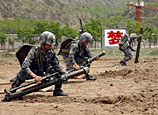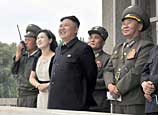
SYDNEY, June 19 (Xinhua) -- Some leading political economists have lauded China's renewed interest in the controversial Trans- Pacific Partnership (TPP), telling Xinhua that China would enjoy more leverage on the tenor of negotiations "from the inside."
While the U.S. has touted the TPP as a new kind of trade pact beyond the traditional areas of free trade agreements (FTA) - covering regulatory consistency across economies as well as the liberalization of trade in goods and services - China has been championing the Association of Southeast Asian Nations' Regional Comprehensive Economic Partnership (RCEP), a free trade pact that envisions more members but less strident terms.
China's Ministry of Commerce has indicated a willingness to consider China's integration into the U.S.led TPP, "based on careful research and according to principles of equality and mutual benefit."
Professor Geoffrey Garrett, Dean of the Australian School of Business at the University of New South Wales, told Xinhua "China should persevere on what will likely be a slow road to TPP."
"It will probably take years for the current TPP members to come to a final agreement on their rules for Asia-Pacific trade, and the process will be slowed further if other countries, such as South Korea, decide to join the talks. So China has time on its side,"
Sanchita Basu Das, an ISEAS Fellow and Lead Researcher for Economic Affairs in the ASEAN Studies Centre at the Institute of Southeast Asian Studies, agrees with Professor Garrett that the TPP structure is not a tool for "containing" China.
"First of all, the TPP initiative could be seen as similar to the rules of the WTO, where countries get together to follow certain guidelines and standards in conducting economic activities and bringing in a level playing field for each other."
In this regard nations constrain each other from unfair international trade practices, not those that are not party to the agreement.
"Second, trade agreements such as the TPP cannot 'contain' China, as the TPP members who participate in Asia's production network with China may not support it. Even the U.S. needs China to cooperate on commercial activities," Basu Das said.
The TPP has been widely seen as the economic foundation of the U.S. pivot to Asia, compounding China's measured reluctance.
Garrett says there are two reasons for China's caution.
"One reason is that China wants to take part in setting international rules, not just having to take or leave rules written in America. The other reason is that it will take time for China to be ready to accept the kind of reforms to its domestic economy the U.S. is proposing." He said.
Countries that have chosen to stay on the sidelines, including China, that now seek to join the TPP during or after the negotiations have to accept all the terms that have already been agreed upon prior to their entry.
As such, RCEP negotiations, which began earlier this month, include the 10 ASEAN member nations and the six countries that already maintain FTAs with the regional organization-- Australia, China, India, Japan, the Republic of Korea and New Zealand.
Likewise, Garrett believes the advantages for China are twofold.
"Being inside the world's biggest new trade agreement that will connect the major economies on both sides of the Pacific would help China in its transition laid out in the 12th Five Year Plan - from three decades reliance on investment, exports and manufacturing to its future of more consumption, more imports and more services.
"At the same time, China's involvement in TPP would reduce the prospect of the trade agreement's becoming a U.S. geopolitical tool to counter China's rise.
"The potential political and strategic dimension of TPP was made clear recently when the U.S. welcomed free trade skeptic and recalcitrant Japan into the TPP camp with open arms, at a time of high and rising China-Japan tensions in the East China Sea." Garrett said.
While the TPP may no longer smack of containment to observers, China is dizzy with U.S. rhetoric of China needing to stand within international convention on convenient issues from the South China Sea, the appreciation of the Yuan to intellectual property protection.
As the U.S.' second largest trading partner, its third export market and its biggest source of imports, China is unlikely to be dictated to when it comes to drawing global trade lines in the sand.
China has either signed, or is in the process of signing, several bilateral and multilateral FTAs.
In fact China is establishing bilateral trade pacts with five of the twelve TPP members (Australia, New Zealand, Chile, Singapore and Peru), and engages with three TPP parties (Brunei, Malaysia and Vietnam) through a broader trade deal with ASEAN.
China is also currently participating in the ASEAN-led Regional Comprehensive Economic Partnership which involves 16 countries, including India, and is negotiating the ChinaJapanKorea trilateral FTA.
It is not a nation struggling for economic engagement.
Garrett says the TPP is at least as much about geopolitics as it is about trade and investment.
"China is currently on the outside looking in as the U.S. tries to re-assert its economic dominance of the Asia Pacific century. China should work to join the TPP negotiations as soon as is practical so that it can have its own say on the rules of economic integration across the Pacific."
Basu Das predicts, at least in the short term, China is most likely to keep its distance from the TPP.
"It is not ready to implement the types of obligations currently being negotiated. Rather, China will wait to prepare its domestic economy before considering the 'comprehensive high- quality' trade accord... However, whether China ultimately joins the TPP is a choice China has to make."
















 Shocking! Hairy stocking to beat sex harassment
Shocking! Hairy stocking to beat sex harassment


![]()
